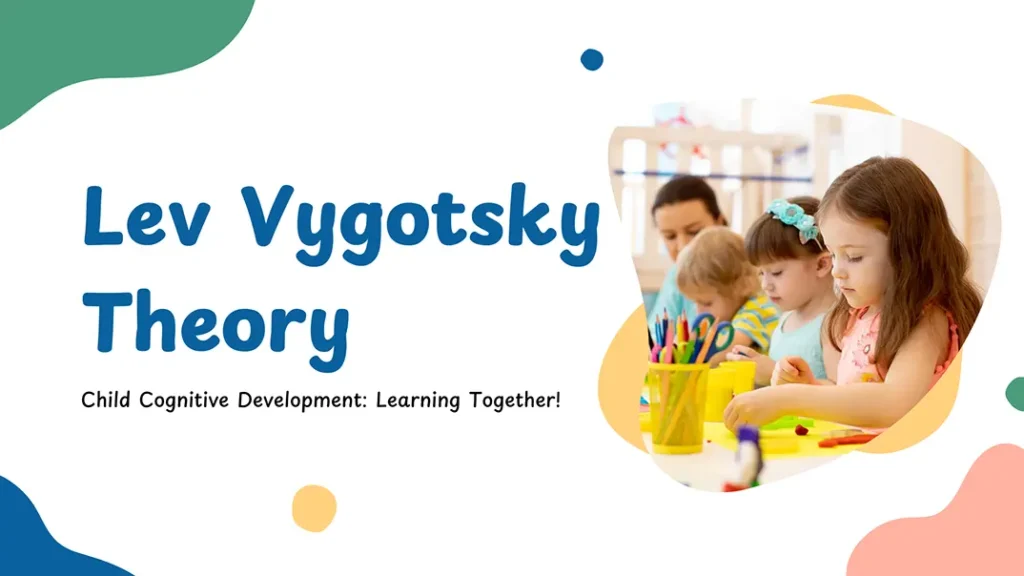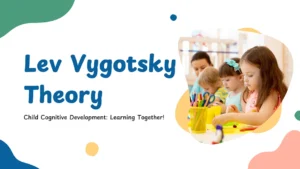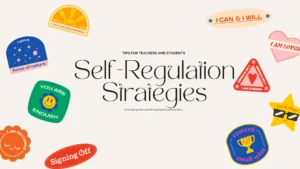How do children truly learn and develop their cognitive skills? What role does social interaction play in a child’s ability to grasp new concepts? Understanding how children acquire knowledge isn’t just about tracking developmental milestones—it’s about identifying the deeper psychological mechanisms behind learning. This is where the Lev Vygotsky Theory challenges conventional thinking, raising critical questions about how environment, culture, and guidance shape cognitive growth.
By emphasizing the importance of social and cultural context in learning, Vygotsky proposed that children progress more effectively when they are supported within their “Zone of Proximal Development” (ZPD)—the gap between what they can do independently and what they can achieve with guidance. This theory introduces key concepts like scaffolding, collaborative learning, and internal speech, offering a practical framework for educators and parents to enhance cognitive outcomes. The Lev Vygotsky Theory not only explains how children learn but also shows how to support that learning in real-life settings.
In the following sections, you’ll gain a clear, step-by-step understanding of the Lev Vygotsky theory and how it applies to real-life education. This guide will connect theory with action. Keep reading to discover how you can use these insights to support children’s learning, foster independence, and unlock their highest potential.
What Is Lev Vygotsky Theory?
The Lev Vygotsky theory is one of the most influential frameworks in developmental psychology, offering a sociocultural approach to understanding how children acquire knowledge and develop cognitively. Unlike other cognitive theories that focus solely on internal processes, Vygotsky emphasized the profound role of social interaction and cultural context in shaping a child’s mental functions.
At the heart of the Lev Vygotsky theory is the belief that culture provides the tools that children use to think, solve problems, and understand the world. Language plays a central role, not only as a means of communication but also as a key driver of thought. By focusing on the dynamic relationship between the learner and their environment, the theory offers a framework for designing educational experiences that are responsive to each child’s social and cultural background.
The Lev Vygotsky theory positions learning as a dynamic, socially mediated activity. It moves beyond the idea of isolated intelligence and highlights the importance of community, dialogue, and shared experiences in cognitive growth. This Lev Vygotsky theory not only explains how children learn but also gives educators, psychologists, and parents actionable strategies to enhance that learning.
The History Behind Lev Vygotsky Sociocultural Theory
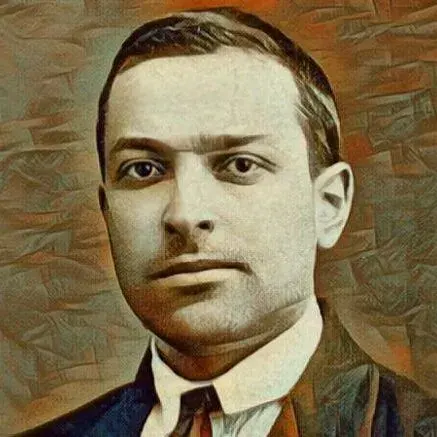
The Lev Vygotsky theory of child cognitive development emerged in the early 20th century during a period of rapid change in psychology and education. Lev Vygotsky, born in 1896 in Orsha, Belarus (then part of the Russian Empire), was trained in law, literature, and psychology, which gave him a unique interdisciplinary perspective. Influenced by Marxist philosophy, he viewed human development as deeply rooted in social and historical contexts.
Between 1924 and 1934, Vygotsky conducted intensive research on how children learn, with a particular focus on language, play, and problem-solving. One of his earliest and most influential works was Thought and Language (1934), where he introduced the core idea that thought is internalized speech. This concept would later become a cornerstone of Lev Vygotsky theory, especially in explaining how children use language as a tool to structure their thinking and solve problems. Unfortunately, Vygotsky’s work was not widely known outside the Soviet Union during his lifetime due to political restrictions and his early death from tuberculosis at age 37.
It was not until the 1960s, when his writings were translated into English, that the Lev Vygotsky theory gained international recognition. Since then, it has profoundly influenced educational psychology, inspiring teaching methods that integrate social interaction, cultural context, and guided learning as central to cognitive development.
What Makes Lev Vygotsky Theory Unique?
The Lev Vygotsky theory stands out among developmental theories for several key reasons—especially its groundbreaking emphasis on the role of social and cultural context in shaping how children think and learn. Unlike many traditional models that viewed development as a linear, solitary process, Vygotsky introduced a more dynamic and interactive perspective that continues to influence education and psychology today.
Learning Rooted in Social Relationships
Vygotsky believed that cognitive development begins in social contexts. Children first learn by interacting with others—through dialogue, play, and observation—before internalizing those mental processes. This idea contrasts with theories that treat learning as something that starts and ends within the individual. In Vygotsky’s view, human interaction isn’t just helpful in learning; it is the foundation of it.
Cultural Tools Shape How Children Think
Another defining feature of the Lev Vygotsky theory is its focus on cultural tools, such as language, symbols, counting systems, and storytelling. These tools are passed down from one generation to the next and shape how children perceive the world. According to Vygotsky, development is not simply a product of biology or age, but also of the cultural environment in which a child is raised.
A Vision of Potential, Not Just Present Ability
One of the most impactful ideas in Vygotsky’s work is the Zone of Proximal Development (ZPD), which describes the range between what a child can do independently and what they can achieve with support. This shifts the focus from testing what a child already knows to understanding what they are ready to learn. It allows teachers and parents to see learning as a dynamic process and to guide children just beyond their current abilities.
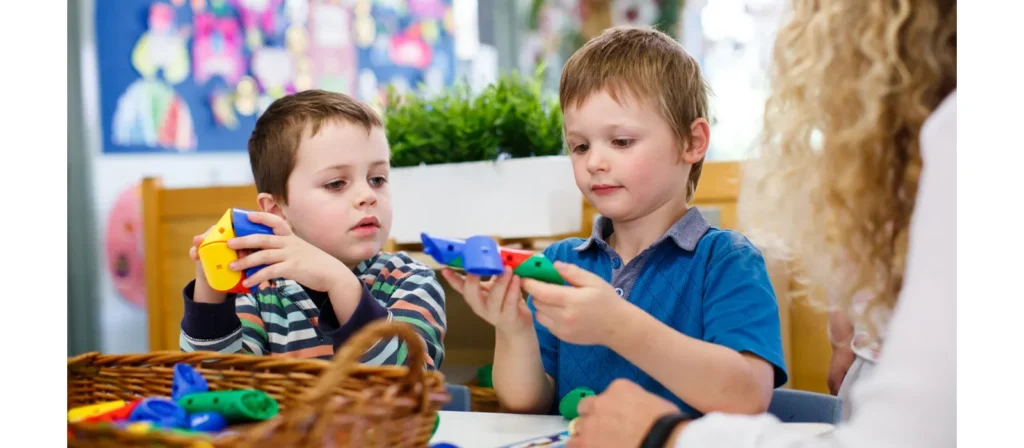
Guidance That Adjusts With the Learner
Closely connected to the ZPD is the principle of instructional support that evolves with the learner. Known today as scaffolding, this approach involves offering help that matches the child’s level of need and gradually reducing it as their skills grow. This method fosters not only academic competence but also self-confidence and independence.
Language as a Cognitive Tool
In the Lev Vygotsky theory, language plays a central role in mental development. He introduced the concept of private speech, where children talk to themselves while solving problems or navigating tasks. This kind of speech is more than just external chatter—it reflects how children process information and develop self-regulation. As they mature, this speech becomes internalized, guiding their thought processes in more complex situations.
Learning Through Participation, Not Isolation
Vygotsky emphasized that children learn best through active participation in shared activities. Whether through cooperative play, classroom discussions, or working alongside a skilled adult, these experiences help children build knowledge in real-time and in real-world contexts. Learning, in his view, is not something a child absorbs passively but something they construct through involvement and guidance.
More Knowledgeable Other (MKO)
In the Lev Vygotsky theory of child cognitive development, the more knowledgeable other (MKO) refers to anyone who has a higher level of skill, knowledge, or understanding in a particular task or subject than the learner. This person is not limited to a teacher or parent—it can also be a peer, older sibling, coach, or even a digital resource that guides learning. The key is that the MKO provides the expertise and direction needed to help the learner progress beyond their current abilities.
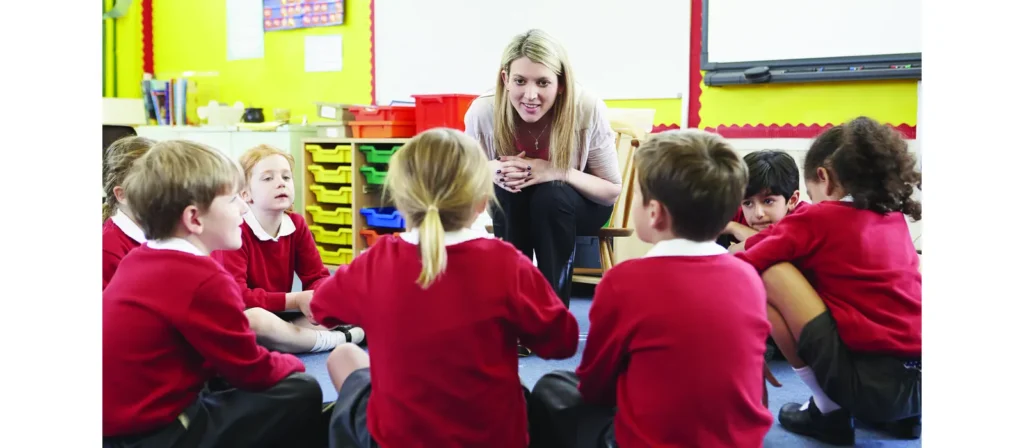
A key strength of the MKO concept is its flexibility. In a classroom, for example, a teacher is often the primary MKO, offering explanations, demonstrations, and corrective feedback. But in a collaborative learning environment, peers can also serve as MKOs, helping each other problem-solve or offering different perspectives. Even young children can act as MKOs when guiding someone slightly less experienced than themselves. This dynamic and reciprocal view of learning turns every interaction into a potential opportunity for growth.
The MKO plays a central role in the zone of proximal development. By offering demonstrations, explanations, feedback, and encouragement, the MKO helps the learner bridge the gap between what they can do independently and what they can achieve with support. As the learner’s competence grows, the MKO gradually reduces assistance, enabling the learner to take full ownership of the task.
In practice, the concept of the more knowledgeable other allows educators and parents to create flexible learning environments where guidance is responsive to the learner’s needs. Whether in a classroom project, a sports training session, or a home learning activity, the MKO ensures that new skills are introduced in a way that is accessible, motivating, and developmentally appropriate.
Vygotsky’s Zone of Proximal Development
The Zone of Proximal Development (ZPD) is one of the most influential and enduring concepts introduced by Russian psychologist Lev Vygotsky. It refers to the range of tasks that a child can perform with the guidance or assistance of others, but cannot yet accomplish independently. In essence, ZPD represents the potential for cognitive development, showing what a child is capable of achieving with support, rather than what they can currently do on their own.
Vygotsky defined the ZPD as: “The distance between the actual developmental level as determined by independent problem solving and the level of potential development as determined through problem-solving under adult guidance or in collaboration with more capable peers.”
This zone lies between the level of actual development—what a child can do alone—and the level of potential development—what they can do with help. It’s within this dynamic, interactive space that optimal learning occurs.
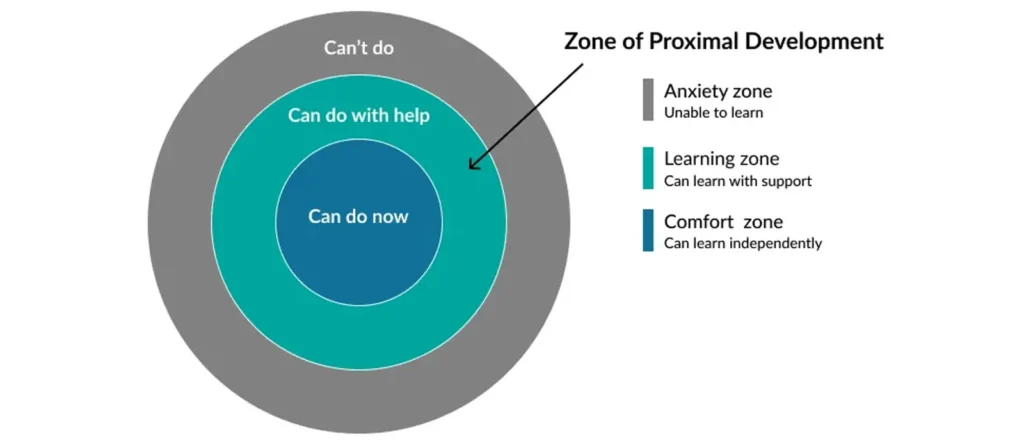
Stages of the Zone of Proximal Development
The zone of proximal development (ZPD), central to the Lev Vygotsky theory, is not a single fixed stage but a dynamic process that evolves as the learner acquires new skills. It can be understood in three main stages:
1. Tasks the Child Can Do Independently
At this stage, the child is able to complete certain activities without external help. These tasks represent their current level of development. For example, a student who can already read simple words without assistance is demonstrating skills within their independent zone.
2. Tasks the Child Can Do With Guidance
This is the core of the zone of proximal development. These are activities that a child cannot yet do alone but can achieve with the support of a more knowledgeable other, such as a teacher, parent, or peer. Through scaffolding, modeling, and collaboration, the child begins to internalize new strategies. For example, solving a math problem with hints or working through a story with guided questions falls into this stage.
3. Tasks Beyond the Child’s Current Reach
The final stage includes tasks that are too difficult for the child, even with guidance. These are outside the ZPD and may lead to frustration if attempted too early. Over time, as the learner masters tasks within their ZPD, previously unreachable challenges may shift into the “with guidance” category, reflecting ongoing cognitive growth.
Instructional Scaffolding Theory
Instructional Scaffolding is a key educational strategy derived directly from Vygotsky’s Zone of Proximal Development (ZPD). It refers to the temporary support structures provided by a teacher, peer, or other “more knowledgeable other” to help a learner successfully perform a task they could not accomplish alone. The concept draws an analogy from physical scaffolding used in construction: it provides necessary support during building, but is gradually removed as the structure becomes stable.
The essence of instructional scaffolding lies in meeting students within their ZPD, offering just the right amount of help—not too much to hinder independence, and not too little to cause frustration. As the learner becomes more competent, the support is gradually withdrawn, enabling the student to perform the task independently.

Key Principles of Instructional Scaffolding
Instructional scaffolding is not simply about offering help; it’s about providing intentional, responsive, and temporary support that aligns with the learner’s immediate cognitive needs. For scaffolding to be effective, it must adhere to several core principles:
Contingency (Adaptive Support)
Scaffolding must be adjusted in real-time based on the learner’s performance. If a student shows understanding, the support should be lightened. If confusion or difficulty arises, the teacher increases assistance. This dynamic responsiveness ensures that the learner remains within their ZPD—challenged, but not overwhelmed.
Fading (Gradual Withdrawal of Support)
As the learner becomes more skilled and confident, scaffolding should be systematically reduced. This gradual removal allows the learner to internalize the skills and concepts, eventually becoming capable of completing the task independently. Fading also avoids creating over-dependence on the instructor.
Transfer of Responsibility (Learner Ownership)
A key goal of scaffolding is to promote learner autonomy. As assistance is withdrawn, the learner takes on more responsibility for the task. This shift helps them develop critical thinking, problem-solving skills, and confidence in their abilities.
Effective Scaffolding Strategies
Scaffolding is one of the most powerful applications of the Lev Vygotsky theory of child cognitive development. To be effective, scaffolding must go beyond offering occasional help; it requires deliberate, flexible strategies that match the learner’s needs and gradually lead them toward independence. Below are some of the most effective approaches:
- Break Tasks into Manageable Steps
Complex activities can be overwhelming for learners if presented all at once. By dividing a task into smaller, sequential steps, educators create a clear path to success. Each step mastered builds confidence and prepares the learner for the next challenge. - Model Desired Behaviors and Skills
Demonstration is a core scaffolding tool. Teachers or parents can show how to solve a problem, write a sentence, or conduct an experiment before asking learners to attempt it themselves. Modeling provides a reference point and reduces uncertainty. - Ask Guiding Questions
Instead of giving direct answers, effective scaffolding uses open-ended or guiding questions that encourage learners to think critically. Questions such as “What do you think will happen next?” or “Why do you think that solution works?” help children develop reasoning skills. - Provide Hints and Prompts
Strategic hints, cues, or reminders support learners when they struggle without removing the challenge. For example, a teacher might highlight a relevant section of text or remind a student of a similar problem they solved earlier. - Use Visuals and Organizers
Graphic organizers, diagrams, or visual cues can make abstract ideas more concrete. These tools help learners organize information, spot connections, and gradually internalize complex concepts. - Encourage Peer Collaboration
Since the Lev Vygotsky theory emphasizes social interaction, peer learning is a natural form of scaffolding. Group projects, pair work, and peer tutoring give students opportunities to support each other and learn collaboratively. - Gradually Withdraw Support
The ultimate goal of scaffolding is independence. As learners demonstrate mastery, assistance should be reduced step by step. This gradual release ensures that students become confident, autonomous problem-solvers.
Language and Thought
Lev Vygotsky theory of cognitive development places language at the very heart of thought, viewing it not just as a communication tool but as a primary driver of intellectual growth. According to Vygotsky, the development of language and thought is initially separate, but eventually converges, creating a powerful system for internal reasoning and problem-solving. Vygotsky outlined distinct stages of language development that illustrate how children progress from external communication to internalized thinking.

1. Social Speech
This first stage occurs in early childhood, when language is used primarily for communication with others. Children talk to parents, teachers, or peers to express needs, share observations, and interact socially. In this phase, language functions as a means of external exchange rather than internal reasoning.
2. Private Speech
As children grow, they begin to use language as a tool for self-guidance. Private speech refers to talking aloud to oneself—commenting on actions, giving directions, or rehearsing problem-solving steps. According to the Lev Vygotsky theory, this stage plays a critical role in learning, as it allows children to regulate behavior and plan actions through verbal thinking.
3. Inner Speech
With further development, private speech becomes internalized into silent thought. Inner speech represents the highest stage of language development, where words transform into mental symbols that guide reasoning, imagination, and abstract thinking. At this point, language and thought are fully integrated, allowing for complex problem-solving and independent learning.
Importance of Play
In the Lev Vygotsky theory of child cognitive development, play is not seen as mere recreation but as a central driver of learning. Vygotsky emphasized that through imaginative play, children step beyond their immediate reality and practice skills that prepare them for more complex thought and social interaction.
Play as a Zone of Proximal Development
Vygotsky believed that play often allows children to function at a higher developmental level than they usually do in everyday life. In pretend scenarios—like playing “doctor” or “teacher”—children adopt roles and language beyond their actual capabilities. This elevated performance within the context of imagination places them squarely in the Zone of Proximal Development (ZPD), where learning is most effective.
By engaging in imaginative roles, children stretch their thinking, apply rules, and handle challenges that would be too difficult without the motivating and flexible framework of play. This makes play a natural space for cognitive advancement, not a distraction from it.
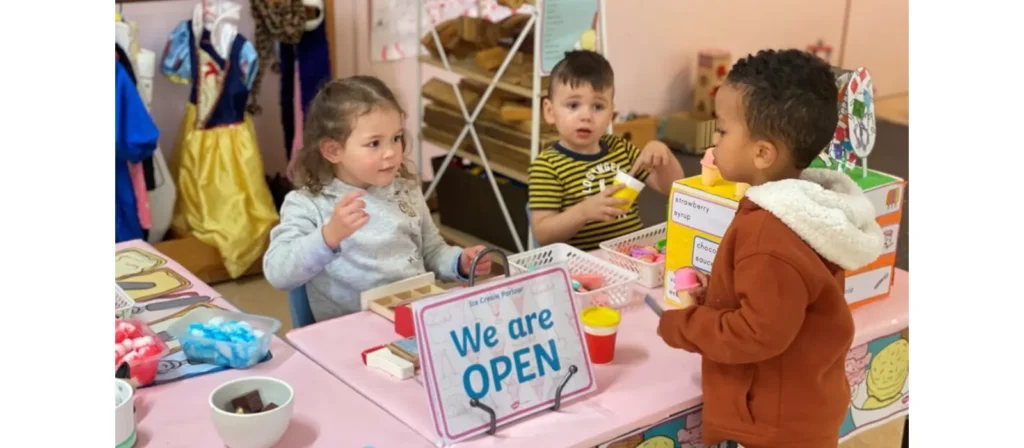
Symbolic Thinking and Abstract Reasoning
Another essential function of play in Lev Vygotsky theory is its role in developing symbolic thinking. When children use objects to stand for other things—a stick as a sword, a banana as a phone—they are practicing abstraction, the cornerstone of human thought.
Symbolic play teaches children to detach meaning from the literal, which is essential for mastering language, mathematics, storytelling, and scientific thinking. These early symbolic substitutions become the foundation for understanding metaphors, analogies, and hypothetical reasoning later in life.
Development of Self-Regulation Through Play
In Vygotsky’s view, self-regulation—the ability to control one’s impulses, emotions, and actions—is one of the most important outcomes of childhood play. Rule-based play requires children to delay gratification, follow social norms, and maintain roles. A child pretending to be a patient must wait their turn. A child acting as a shopkeeper must follow the rules of the game, even if they want to do something else.
These moments help children develop executive function skills, including focus, impulse control, and persistence. Unlike direct instruction, play allows children to practice self-regulation in a low-stakes, highly motivating context.
Cultural Learning Through Social Play
Play is not an isolated act—it is deeply social and cultural. Children use play to recreate real-world experiences, often imitating adults, reenacting social roles, and incorporating familiar themes from their environment. This allows them to internalize the values, expectations, and communication patterns of their culture.
Through interaction with peers, they also learn to negotiate, cooperate, resolve conflicts, and develop empathy. In Vygotsky’s view, play acts as a mini society where children rehearse and absorb the cultural tools they’ll need to function in the real world.
Elementary Mental Functions
In the Lev Vygotsky theory of child cognitive development, learning is understood as a transformation from elementary mental functions to higher mental functions. Vygotsky described elementary functions as the basic, natural abilities that children are born with, such as attention, perception, and memory. These abilities are largely biological and spontaneous, requiring no formal teaching or cultural tools to emerge.
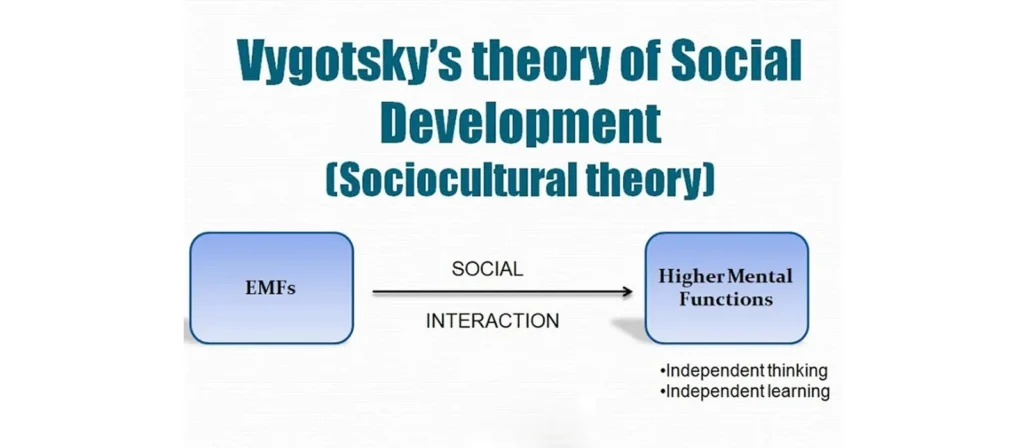
What Are Elementary Mental Functions?
Elementary mental functions refer to the innate, natural abilities that infants are born with or develop in the earliest years of life. These include basic cognitive processes such as:
- Attention
- Perception
- Memory
- Sensory awareness
These functions are largely biological and involuntary, meaning they operate without the child’s conscious control. For example, a baby noticing a bright color, responding to sounds, or recognizing a familiar face involves these elementary capabilities.
While essential, these functions are limited in scope. On their own, they do not lead to intentional learning, strategic thinking, or problem-solving. They serve as the raw mental tools that will eventually be transformed into complex, voluntary processes through social and cultural experiences.
Natural vs. Cultural Development
Vygotsky emphasized that elementary mental functions are part of natural development, similar to other biological processes like walking or grasping. However, he believed that true cognitive growth occurs when these basic abilities are shaped by cultural tools, particularly language.
Through interaction with adults, caregivers, and more knowledgeable peers, a child’s elementary functions become refined and directed. For instance, spontaneous memory (remembering without effort) becomes intentional memory (using strategies to recall information), and attention becomes selective and purposeful.
This transformation is not automatic. It happens only when children are embedded in rich social environments that actively engage them in language use, symbolic play, and structured problem-solving.
The Role of Social Interaction
One of the central ideas in Lev Vygotsky theory is that learning is first social, then individual. Elementary mental functions become higher functions through interpersonal interaction.
Take the example of attention: a child may instinctively look at a loud sound (elementary function), but over time, they learn to focus attention on a teacher’s instructions or a book (higher function). This is usually guided by adults who model behavior, give verbal prompts, or offer feedback.
These social experiences are the catalysts for internalization—the process by which external activities are absorbed and transformed into internal thought processes. In this way, the child does not simply “develop,” they are developed through guided participation in cultural practices.
The Lev Vygotsky theory emphasizes that elementary functions are only the starting point of development. Through social interaction, language acquisition, and the use of cultural tools, these natural abilities are transformed into higher mental functions such as logical reasoning, critical thinking, and abstract problem-solving. This transformation illustrates Vygotsky’s core belief: that learning and cognitive growth are shaped by social and cultural influences rather than biology alone.
What are the Differences Between Lev Vygotsky Theory and Piaget Theory?
Both the Lev Vygotsky theory of child cognitive development and Jean Piaget’s developmental theory have shaped modern education, but they approach learning and growth from different perspectives. Understanding their differences helps educators and parents apply each framework more effectively.
| Aspect | Vygotsky’s Theory | Piaget’s Theory |
|---|---|---|
| Role of Social Interaction | Social interaction is the foundation of learning. Children acquire knowledge through collaboration with teachers, peers, and cultural tools. | Development is primarily an individual process; children construct knowledge independently through exploration. |
| Culture and Environment | Culture and language strongly influence learning. Cognitive tools are passed down socially. | Developmental stages are universal and unfold similarly across cultures. |
| Stages of Development | No fixed stages; development is continuous and shaped by social context. | Cognitive development occurs in four distinct, sequential stages: sensorimotor, preoperational, concrete operational, and formal operational. |
| Language and Thought | Language drives thought and is central to learning. Private speech evolves into inner speech, guiding cognition. | Language reflects existing thought, rather than driving it. Cognitive growth precedes linguistic development. |
| Zone of Proximal Development (ZPD) | Emphasizes the gap between independent ability and what can be achieved with guidance. Learning happens within this zone. | Does not include a concept like ZPD; learning is limited by the child’s current stage of cognitive development. |
| Role of the Teacher | Teachers act as guides and collaborators, providing scaffolding to help learners progress. | Teachers provide materials and opportunities for exploration but avoid heavy guidance, as children learn best through discovery. |
How to Apply Lev Vygotsky Theory?
Lev Vygotsky’s sociocultural theory is not just a theoretical framework—it offers practical tools and strategies that can transform the way we teach, parent, and support children’s cognitive development. Applying Vygotsky’s ideas in real-world settings involves leveraging social interaction, cultural context, and guided learning to help children move beyond what they can do alone.
Use the Zone of Proximal Development (ZPD) as a Guide
At the core of Lev Vygotsky theory lies the Zone of Proximal Development—a concept that redefines how we view a child’s capabilities. Rather than focusing solely on what a learner can already do, ZPD shifts the attention to what they can almost do, with appropriate support. This space represents the sweet spot of learning, where guidance makes the difference between success and frustration.
In practice, educators can apply the ZPD by first assessing a student’s current level, then identifying challenges that stretch their abilities without overwhelming them. Once the task is appropriately chosen, the adult’s role is to provide temporary support, gradually reducing it as the child gains confidence. Instruction tailored to the ZPD ensures that learning remains both challenging and achievable, which leads to more sustained engagement and deeper understanding.
Apply Scaffolding as a Teaching Strategy
Scaffolding is Vygotsky’s solution to bridging the gap between what a learner knows and what they are ready to learn. It refers to the adaptive support provided by a more knowledgeable other, and it’s a highly flexible strategy that must be responsive to the child’s needs and context.
This support can take many forms:
- Modeling a process or behavior, so the child has a clear mental picture of what success looks like.
- Asking strategic questions to guide attention and encourage reasoning.
- Offering cues or prompts to help the learner take the next step without providing the answer outright.
- Breaking tasks into smaller, sequential parts reduces cognitive load.
What matters most in scaffolding is timing and sensitivity. The support must fade appropriately—too much scaffolding leads to dependency, while too little results in confusion or disengagement. Done well, scaffolding fosters autonomy, builds confidence, and ensures that the learner eventually internalizes the skill or concept.
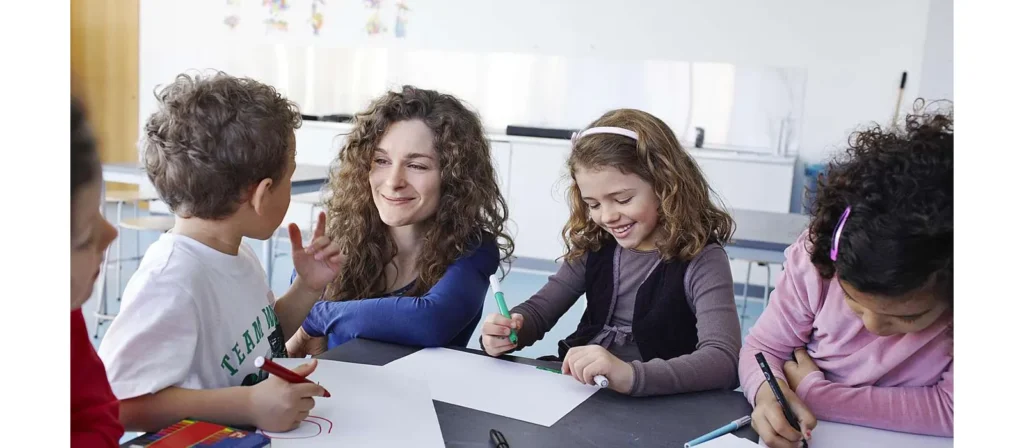
Create Opportunities for Peer Collaboration
Vygotsky saw social interaction as the origin of higher mental functioning, which means that learning with others is not an optional add-on—it’s essential. Group learning allows children to co-construct meaning, challenge each other’s ideas, and practice critical thinking in a dynamic, engaging environment.
Unlike solitary learning, collaboration encourages perspective-taking, active listening, and verbal reasoning, all of which help solidify knowledge. It also creates natural opportunities for peer-to-peer scaffolding, where more capable students support others within the same task. Teachers can structure this by organizing paired reading, group problem-solving, or role-based simulations.
The goal isn’t just to complete tasks—it’s to enable students to develop together, learning from and with each other.
Embed Cultural Tools and Real-Life Contexts
A key insight in Vygotsky’s theory is that cognition is shaped by the cultural tools and symbols children are exposed to. These include not only language, but also writing systems, counting methods, stories, technologies, and social norms. To apply this, educators must design learning environments that reflect and respect the diverse cultural backgrounds of their students.
This involves:
- Incorporating culturally relevant materials and examples into lessons.
- Encouraging students to draw on their personal experiences during discussion and writing.
- Recognizing and integrating community-based knowledge, such as family traditions, local histories, and home languages.
By connecting learning to real-life contexts, children are more likely to understand, remember, and apply what they’ve learned, because it resonates with their lived experiences.
Support the Development of Inner Speech and Metacognition
Vygotsky emphasized that language evolves from a tool for communication to a tool for thought. As children grow, their external speech becomes private speech, and eventually inner speech—a silent internal dialogue that supports reflection, planning, and emotional regulation.
Teachers and parents can help this process by:
- Encouraging children to verbalize their thinking while working through problems.
- Allowing time for self-talk, especially during challenging tasks.
- Asking reflective questions like, “What’s your plan?” or “Why did you choose that?”
These strategies not only develop verbal reasoning but also promote metacognition, enabling children to think about their own thinking—a core component of self-directed learning.
Integrate Purposeful Play in Early Education
In early childhood, play is one of the most powerful applications of Lev Vygotsky theory. It is through play that children test ideas, assume roles, and engage with rules and symbols—all of which foster cognitive flexibility, social understanding, and symbolic thinking.
Educators can structure learning-rich play environments by:
- Providing props, costumes, and scenarios that encourage role-playing and storytelling.
- Observing play to identify ZPD moments where subtle adult involvement can guide learning.
- Participating as a co-player to model language use, problem-solving, or negotiation.
Rather than viewing play as downtime, it should be understood as a core vehicle for learning, especially for younger children.
Train Educators and Caregivers as Intentional MKOs
The concept of the More Knowledgeable Other (MKO) is central to how learning unfolds in Vygotsky’s model. Teachers, parents, and even peers can serve as MKOs, but this role requires skill. It’s not about giving answers—it’s about knowing when to step in and when to step back.
Effective MKOs are those who:
- Observe closely to understand what the learner needs.
- Provide timely, context-sensitive support.
- Use open-ended language, rather than controlling directives.
- Believe in the learner’s ability to progress with the right help.
Training adults to recognize and act on ZPD opportunities can dramatically increase learning outcomes—not through more teaching, but through smarter, more responsive teaching.
Creating a Developmentally Appropriate Environment
A crucial way to apply Lev Vygotsky theory is by designing environments that support development at every stage of learning. Since children’s growth is shaped by the cultural and social settings they engage with, the learning environment should not only provide information but also stimulate interaction, exploration, and self-regulation.
Choosing Furniture for Learning
Furniture plays a foundational role in structuring how children move, interact, and access resources. Developmentally appropriate furniture should encourage autonomy while also supporting social interaction and guided learning.



- Child-Sized and Accessible Design
Low tables, chairs, and shelves allow children to independently access books, supplies, and learning materials. This autonomy nurtures a sense of responsibility and reduces reliance on adults for simple tasks. - Flexible and Movable Arrangements
Lightweight, movable furniture supports different learning formats—whether group discussions, one-on-one guidance, or individual study. This flexibility reflects Vygotsky’s emphasis on learning as a social and adaptable process. - Organized and Open Storage
Open shelving makes toys, art supplies, and books visible and within reach, encouraging children to make choices, plan activities, and self-direct their learning. This setup also fosters accountability, as children learn to return items to their proper place.
Choosing Toys for Cognitive and Social Growth
Toys are more than entertainment in Vygotsky’s framework—they are cultural tools that mediate learning. The right educational toys encourage children to engage in symbolic play, problem-solving, and cooperative activities, which are central to cognitive development.



- Role-Play and Pretend-Play Materials
Costumes, dolls, puppets, and miniature household tools allow children to experiment with cultural roles and narratives. Pretend play strengthens language, imagination, and emotional understanding while giving children opportunities to rehearse real-world scenarios. - Problem-Solving and Construction Materials
Blocks, puzzles, clay, and building sets promote logical reasoning, creativity, and collaboration. Such open-ended toys help children test ideas, experiment with solutions, and refine their thinking processes. - Language-Rich Resources
Picture books, story cards, and alphabet games immerse children in language-heavy environments, reinforcing vocabulary and narrative skills. They also support the development of inner speech, which Vygotsky highlighted as key to higher mental functions.
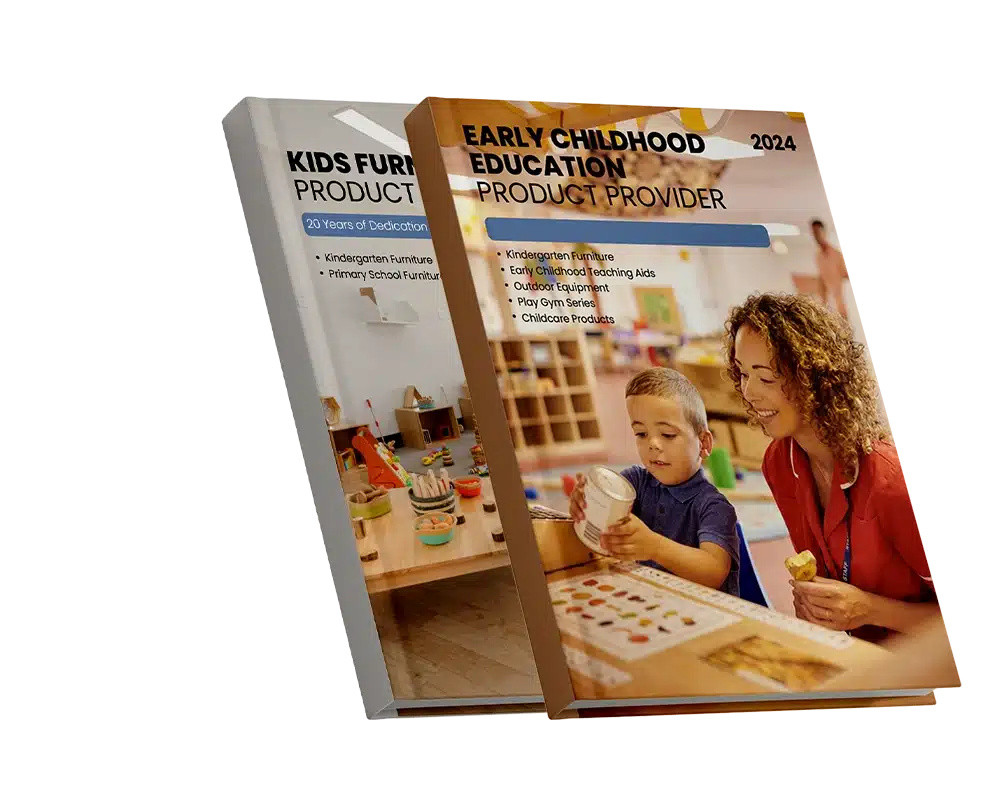

Critical Evaluation of Lev Vygotsky Theory of Cognitive Development
The Lev Vygotsky sociocultural theory of child cognitive development has made a lasting contribution to educational psychology, yet it is not without challenges and critiques. A balanced evaluation highlights both its influence and its limitations.
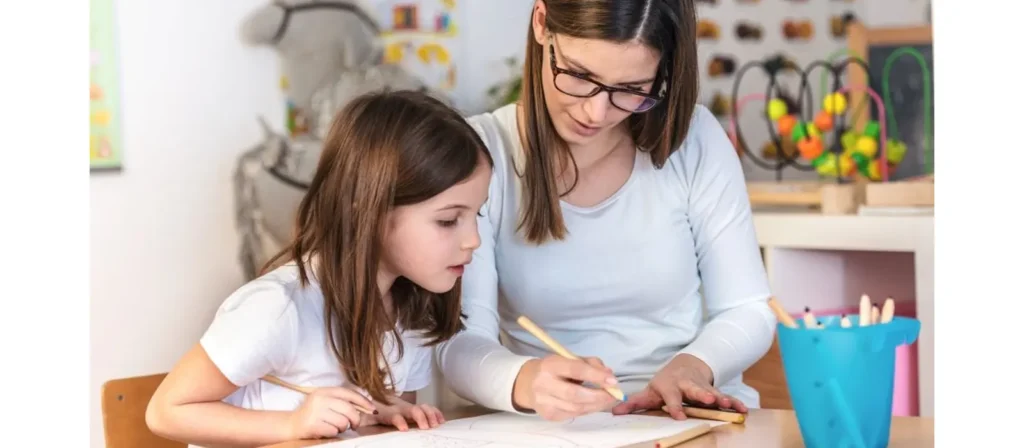
Strengths of the Lev Vygotsky Theory
- Emphasis on Social Interaction: The Lev Vygotsky theory shifted the focus of learning from an individual process to a collaborative one, recognizing the importance of teachers, peers, and cultural tools.
- Practical Applications: Concepts like the zone of proximal development and scaffolding have become central to modern instructional design, making the theory highly applicable in classrooms.
- Cultural Relevance: By linking learning to cultural context, the Lev Vygotsky theory offers a flexible framework that can adapt across diverse educational settings, rather than prescribing universal stages.
- Language as a Tool of Thought: Vygotsky’s recognition of language as a driver of cognitive growth has been validated by later research in linguistics and developmental psychology.
Limitations and Criticisms
- Lack of Empirical Evidence: Much of the Lev Vygotsky theory is based on observation and philosophical reasoning rather than large-scale experimental research, leaving some concepts open to interpretation.
- Vague Definitions: Terms such as the “zone of proximal development” can be difficult to measure precisely, making it challenging to apply consistently in research or practice.
- Underestimation of Biological Factors: Critics argue that Vygotsky placed too much emphasis on social and cultural influences, with less attention to innate cognitive structures or biological development.
- Limited Scope of Work: Vygotsky’s early death at age 37 meant that his theory remained incomplete. Many of his ideas were later developed by other scholars, leading to variations that are not always consistent with his original writings.
Although the Lev Vygotsky theory has its shortcomings, its impact on education and psychology remains profound. It has inspired research into collaborative learning, guided instruction, and culturally responsive pedagogy, and continues to shape the way educators view child development. The balance between acknowledging its limitations and applying its insights ensures the Lev Vygotsky theory remains both relevant and useful in today’s learning environments.
FAQs About Lev Vygotsky Theory
- Why is language so important in Lev Vygotsky theory?
Language is considered a primary tool for thought and learning. Vygotsky believed that through social speech, children eventually develop inner speech, which helps them think, plan, and solve problems independently. Language connects external experience to internal cognition. - Can Lev Vygotsky theory be applied outside of schools?
Yes. The Lev Vygotsky theory can be applied in homes, childcare, and social environments. Parents can use storytelling, cooperative games, and guided conversations to support learning at home. - How does Vygotsky’s focus on culture influence teaching today?
By emphasizing cultural context, the Lev Vygotsky theory encourages culturally responsive teaching. Educators adapt lessons to reflect students’ backgrounds, making learning more meaningful and inclusive. - What are the elementary and higher mental functions in Lev Vygotsky theory?
Elementary mental functions are natural abilities like attention, memory, and perception. Higher mental functions, developed through culture and interaction, include reasoning, problem-solving, and abstract thinking. - Why is social interaction considered central in Vygotsky’s view of learning?
Because knowledge originates in social exchanges. Through conversations, joint activities, and cultural practices, children absorb ways of thinking that later become part of their independent reasoning.
Conclusion
The Lev Vygotsky theory of child cognitive development remains one of the most influential frameworks in educational psychology. By emphasizing that learning is fundamentally a social and cultural process, it reshaped how we understand the relationship between children, their environment, and their development. Concepts such as the zone of proximal development, the more knowledgeable other, scaffolding, and the role of language and play provide a practical foundation for both teaching and parenting.
While the Lev Vygotsky theory has faced criticisms for its limited empirical evidence and broad definitions, its value lies in its ability to connect theory with real-world application. Educators continue to draw on its principles to design lessons that balance guidance with independence, encourage collaboration, and recognize the importance of cultural context. Parents and caregivers also benefit from its insights, finding ways to turn everyday interactions into opportunities for learning.

